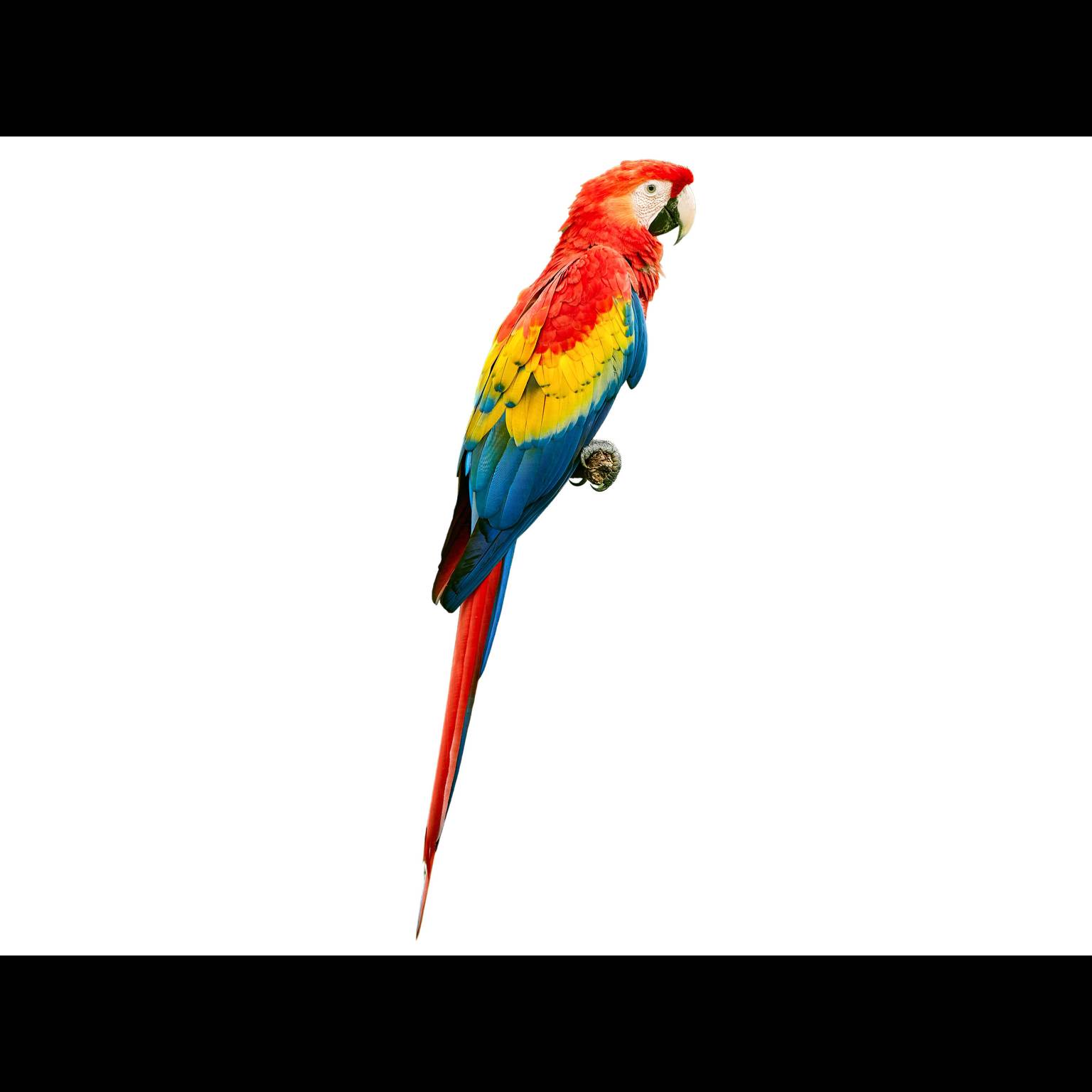
Scarlet Macaw
Ara macao
The Scarlet Macaw (Ara macao) is a resplendent parrot, a tapestry of vivid yellow, red, and blue hues. This Neotropical avian marvel is native to the humid evergreen forests of the Americas, stretching its wings from southeastern Mexico to parts of South America, including Peru, Ecuador, Colombia, Bolivia, Venezuela, and Brazil. It is also found on the Caribbean island of Trinidad and the Pacific island of Coiba. The Scarlet Macaw is the proud national bird of Honduras and is admired worldwide for its striking plumage.
Identification Tips
Adult Scarlet Macaws are about 81 centimeters in length, with over half of this being their pointed, graduated tail—a characteristic feature of macaws. They weigh approximately 1 kilogram. Their plumage is predominantly scarlet, but they boast light blue rump and tail-covert feathers, yellow upper wing coverts, and dark blue upper sides of their flight feathers. The undersides of their wings and tail feathers shimmer with a dark red and metallic gold iridescence. Around their eyes, they have a patch of bare white skin, adorned with tiny white feathers. The upper mandible is pale horn in color, while the lower is black. Juveniles have dark eyes, which lighten to a striking yellow in adulthood.
Habitat
Scarlet Macaws favor humid lowland subtropical rainforests, open woodlands, and savannas. They are also found along river edges, where they can be seen soaring above the canopy or gathering at clay licks.
Distribution
The Scarlet Macaw's South American range is extensive, particularly in the Amazon forest. In Central America, their presence is noted from Mexico to Panama, including Guatemala, El Salvador, Honduras, and Belize. They are occasionally sighted in Florida and have an introduced population in Puerto Rico.
Behaviour
These macaws are often seen flying solo or in pairs, though they may congregate in flocks at certain locations like clay licks. They communicate with a variety of loud squawks and screams that can be heard over great distances. In captivity, they are known for their ability to mimic human speech.
Song & Calls
The Scarlet Macaw's vocalizations are a series of loud, high, and sometimes low-pitched throaty squawks, squeaks, and screams, which are used to communicate with their group across the dense forest.
Breeding
Scarlet Macaws are monogamous, pairing for life. The female lays two to three white eggs in a tree cavity, which she incubates for about five weeks. Chicks fledge after about 90 days and leave their parents around a year later. They reach sexual maturity at five years of age.
Similar Species
The Scarlet Macaw is often confused with the slightly larger Green-winged Macaw, which has more pronounced red lines on the face and lacks yellow in the wing.
Diet and Feeding
In the wild, these birds feed on a diet of fruits, nuts, seeds, flowers, nectar, insects, and larvae. They are particularly fond of snails and bugs, especially during breeding seasons when they require additional protein.
Conservation status
The Scarlet Macaw is classified as Least Concern by the IUCN, with an estimated wild population of 50,000 to 499,999 individuals. However, the species is listed under CITES Appendix I, prohibiting commercial international trade due to poaching for the pet trade. The northern subspecies, A. m. cyanopterus, is considered endangered by the USFWS.


























































